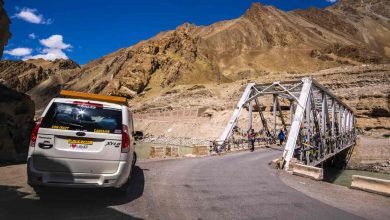Hemis National Park is one of the largest protected areas in India and houses some of the rare endangered mammal species that you might not find elsewhere in the same density. The place is always covered with snow and has the Indus River flowing on one side and the Zanskar mountain range standing mighty tall on the other side. The place is a wonderland that transports you into a realm that is sure to soothe your soul. The wildlife enthusiasts will have a gala time exploring the national park.
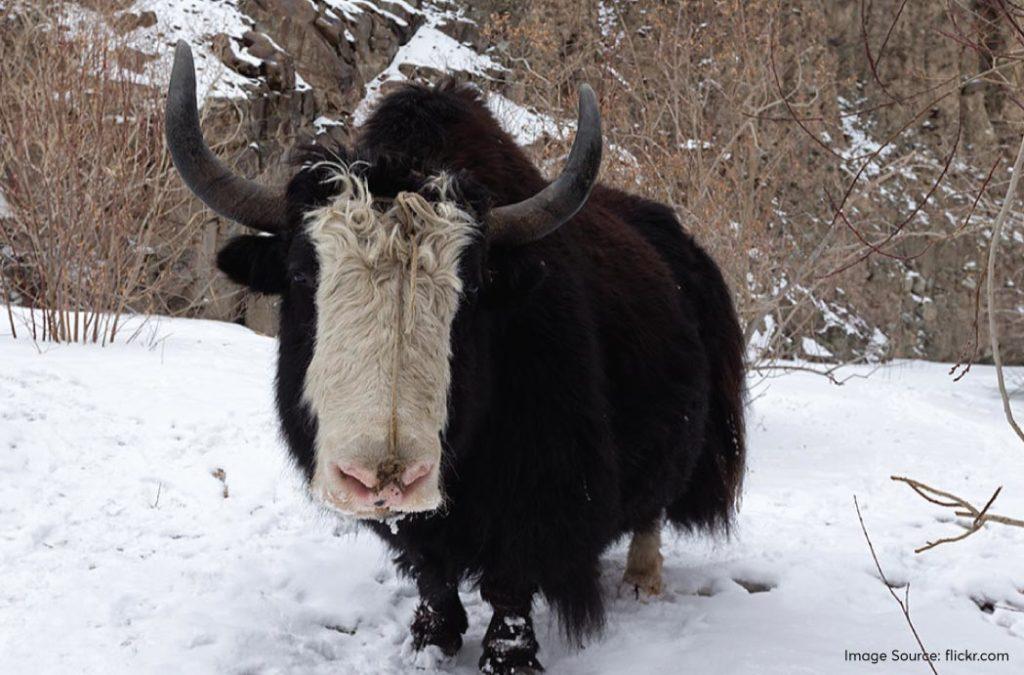
Here’s everything you need to know about Hemis National Park, including flora and fauna that you can spot here, entry details and the wildlife safari.
Read on!
About Hemis National Park
Hemis National Park is also popular as Hemis High Altitude National Park. It is named after the Hemis Monastery which is present very close to the protected area. The national park was established in 1981 and was initially only 600 km2. Then the authorities incorporated more of the surrounding land and extended its perimeter to 3350 km2 in 1988. Right now, the park constitutes a total of 4400 km2. The park is present in Ladakh region of Jammu and Kashmir. The primary purpose of establishing the national park is to protect the snow leopards and their prey species.
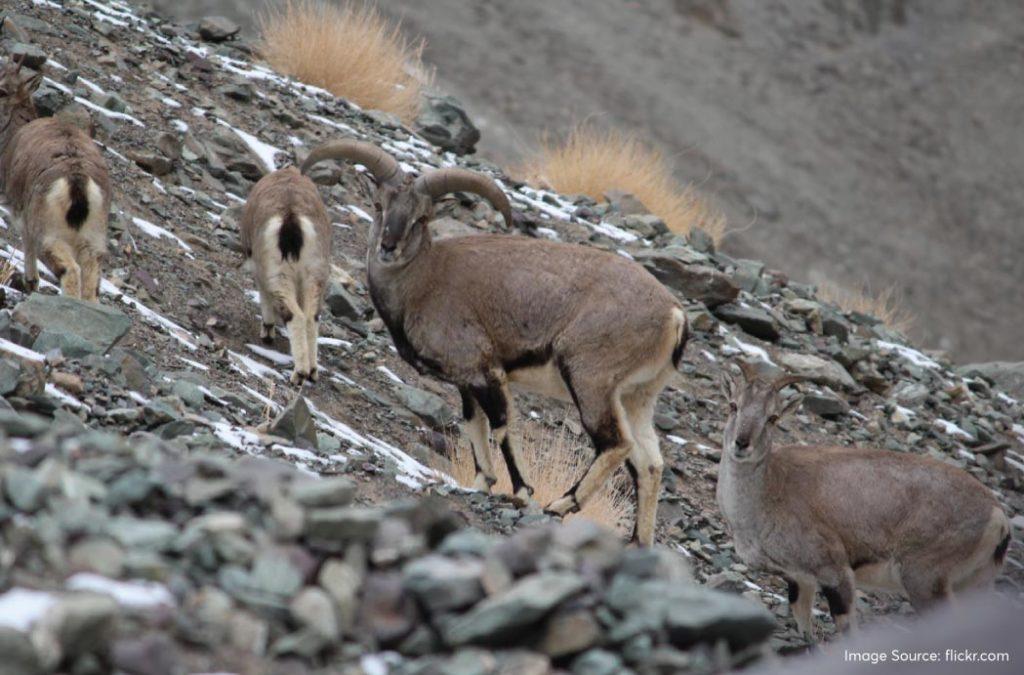
Hemis National Park has rugged terrains, deep gorges and very tall peaks. The temperature here is usually very low and the region only sees mild summers. In winter, the snowfall in the terrain can be moderate to very heavy. The altitude of the different peaks in Hemis National Park ranges from 3300 metres to 6000 metres. 16 mammal species and 73 bird species are recorded to be residing in Hemis National Park at the moment.
Another splendid national park in the country is Jim Corbett National Park in Uttarakhand which is known for its population of Bengal Tigers.
What to spot in Hemis National Park?
When you visit Hemis National Park, you must look out for these unique species of mammals that are rare to find but absolutely fascinating to look at.
1 – Snow Leopard
The snow leopard is the apex predator of Hemis National Park and the whole protected area was established to help this rare species to reproduce and proliferate without external threats. These animals are mostly found at an altitude of 3000 to 5500 metres in the national park.
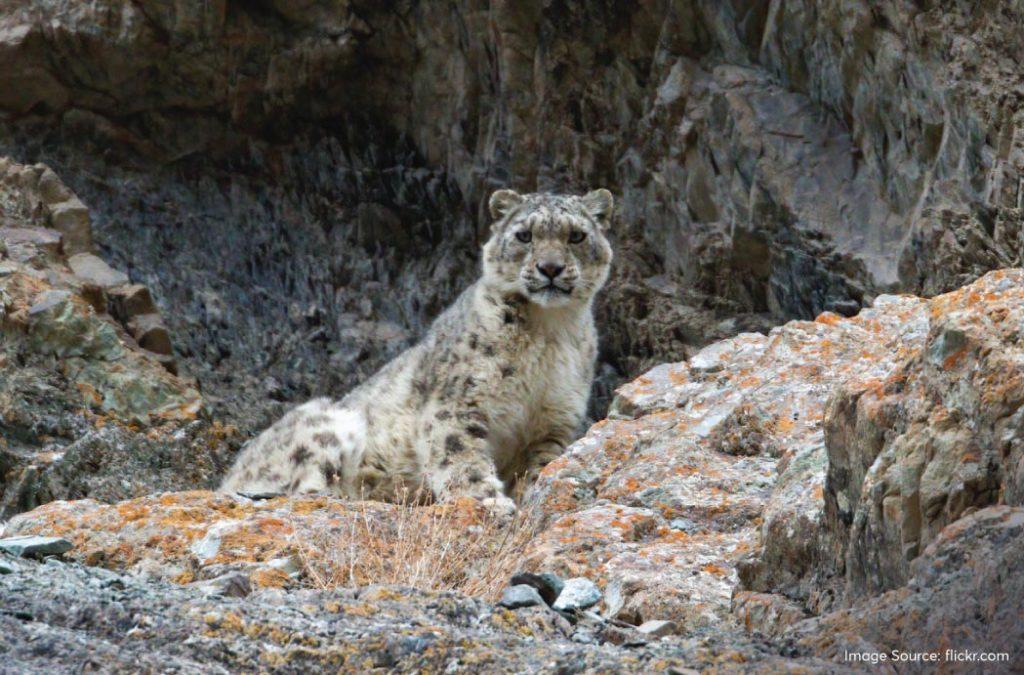
It has smoky grey fur that provides excellent camouflage in the snowy Ladakh terrain. The easiest way to identify them is to look out for the dark rosettes and spots on their body. They are elusive and fast, so you need to be highly observant to catch a glimpse of them.
2 – Himalayan Blue Sheep
The Himalayan Blue Sheep is also referred to as ‘Bharal’ by the locals. This is one of the prominent prey species for the snow leopards. It has a slate-blue coat, strong limbs and distinct curved horns. They feed on the alpine trees and shrubs of the region and travel in herds.
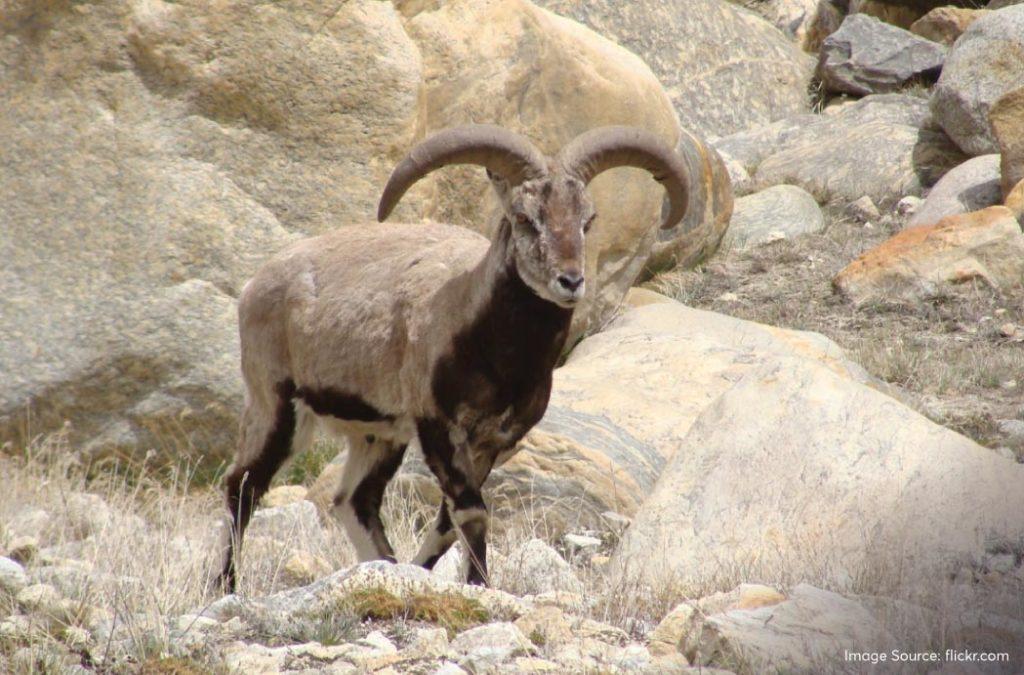
The snow leopards and other carnivores of the national park take advantage of how these animals move in groups. They end up successfully securing their prey by pouncing on the blue sheep with an element of surprise!
3 – Tibetan Wolf
The Tibetan Wolf is another predator that you will come across in the Hemis National Park. They have thick fur that varies in colour from pale cream to dark grey. They are usually very silent and prefer to stay behind dense bushes and shrubs.
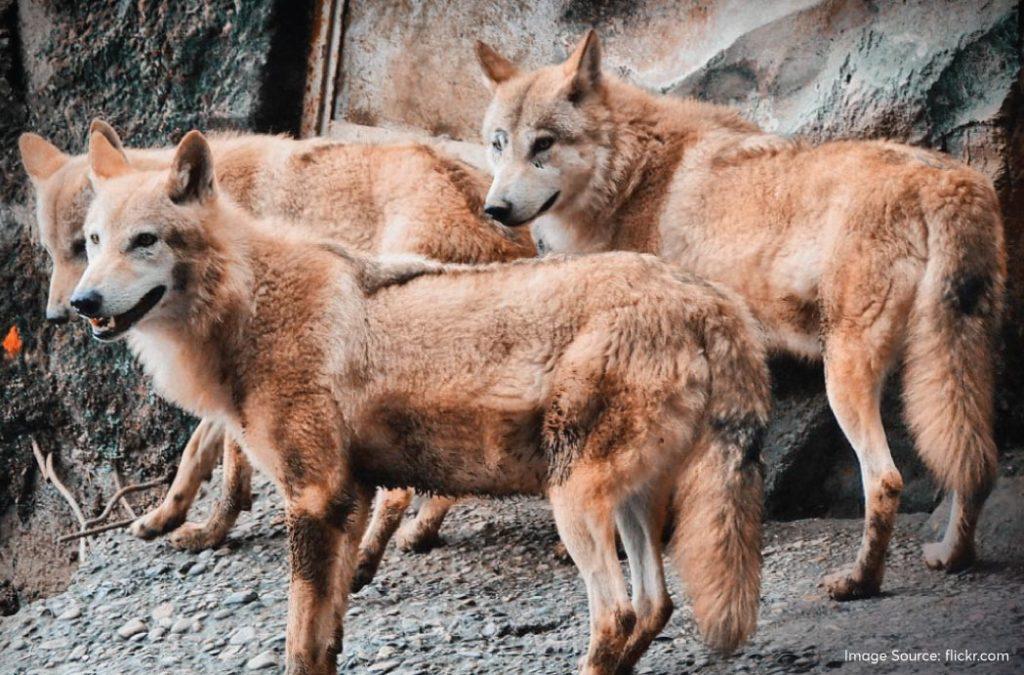
While hunting, they chase small to medium-sized mammals like the Himalayan Blue Sheep and Himalayan Marmots. However, they also feed on the grazing livestock of the locals who live around the boundary of the national park.
4 – Eurasian Brown Bear
The Eurasian Brown Bear is the largest mammal that you will find in the Hemis National Park. They are omnivorous in nature and feed on roots, berries, insects and small mammals. They play a very important role in the Hemis National Park ecosystem by helping in seed dispersal for effective pollination.
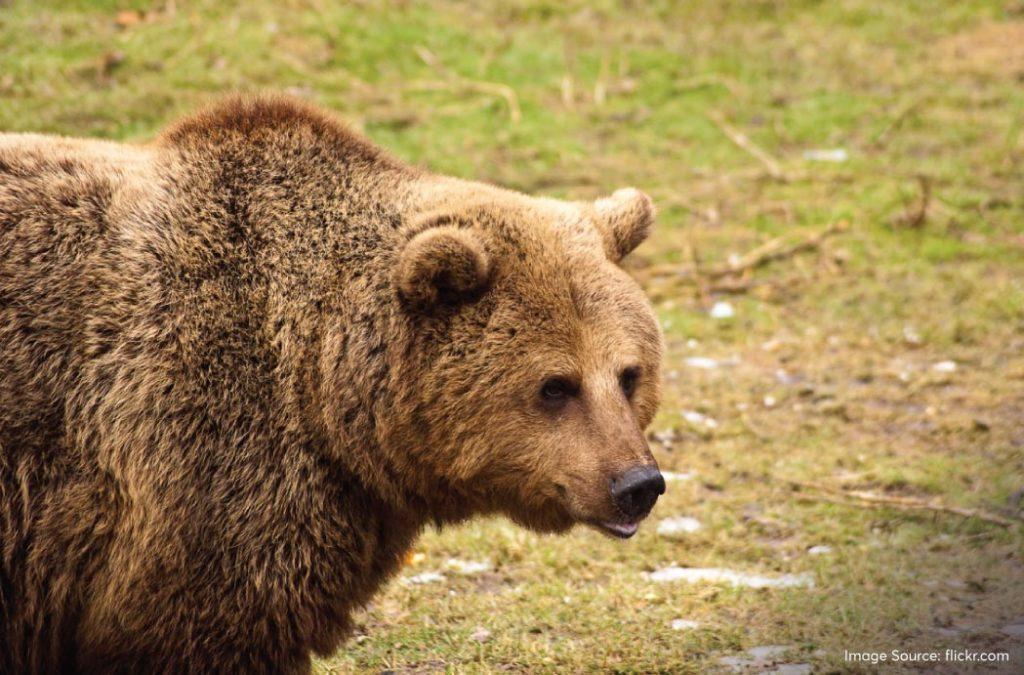
If you see a Eurasian Brown Bear, it’s hard not to be intimidated by their robust body and muscular shoulders. They have thick brown fur that protects them from the harsh climatic conditions of the Ladakh Valley. These bears are so powerful that they sometimes scare away the snow leopards around them!
5 – Himalayan Marmot
The Himalayan Marmots are large ground squirrels that are very social. They rarely approach humans but if one of them approaches you out of curiosity, try not to panic and refrain from feeding them anything as they have the habit of biting!
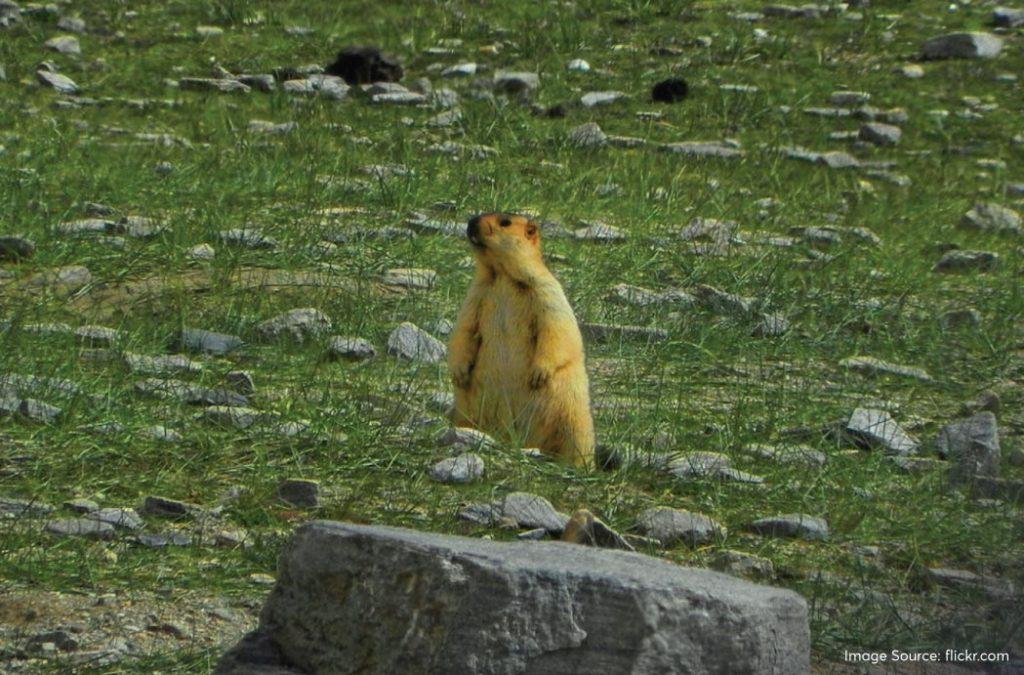
These Marmots have brownish-yellow fur and a stout body, both of which help them to survive in extremely cold conditions. They live in colonies and make this unique whistling sound to alert each other of possible threats. They hibernate during the winters so you might not find them running around if you choose to come to Hemis National Park during the snowing months.
You will also find a lot of majestic avians occupying the skies of Hemis National Park. A few of them will greet you while relaxing on the branch of a tree or while quenching their thirst at the water bodies. Here are some birds that you will come across in the region.
6 – Golden Eagle
The Golden Eagle is a beautiful bird that is fascinating as well as powerful. It has dark brown feathers over the body and golden-brown ones near the tail and at the back of its neck.
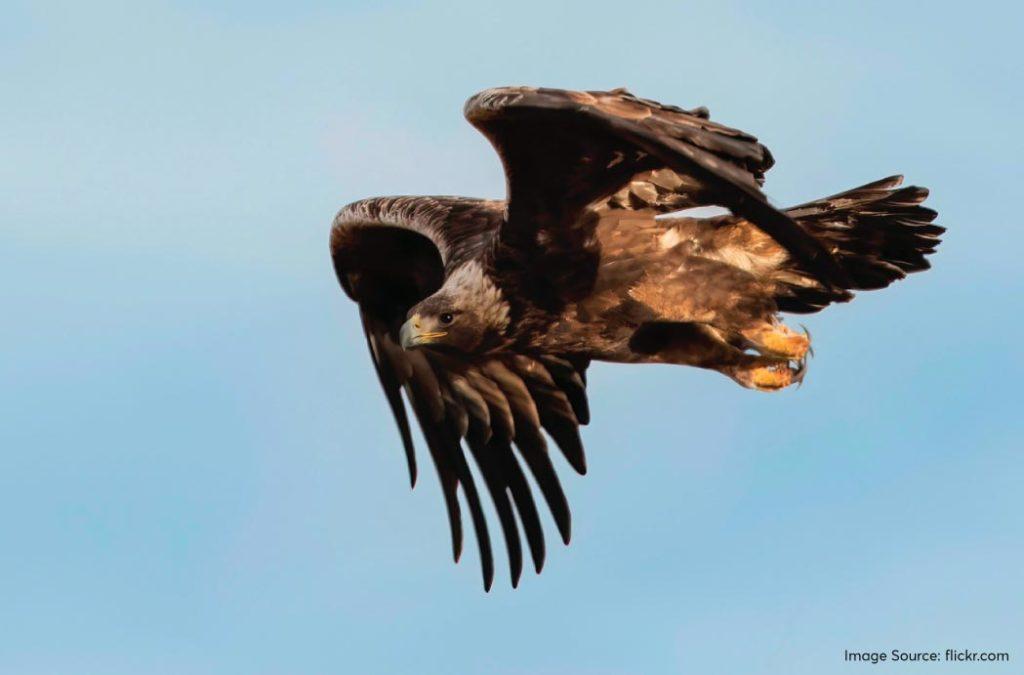
With a wingspan of 2.3 metres, it glides over the rough terrain of the Hemis National Park and feeds on small mammals, birds and reptiles. The Golden Eagles have powerful eyesight and strong talons, both of which are very useful for them to secure their prey and identify threats.
7 – Tibetan Snowcock
Unlike the Golden Eagle, the Tibetan Snowcock is a bird that mostly dwells on the ground and feeds on seeds, leaves and insects. It has a large body with a greyish-brown colour, a white face and black markings on its chest and flanks.
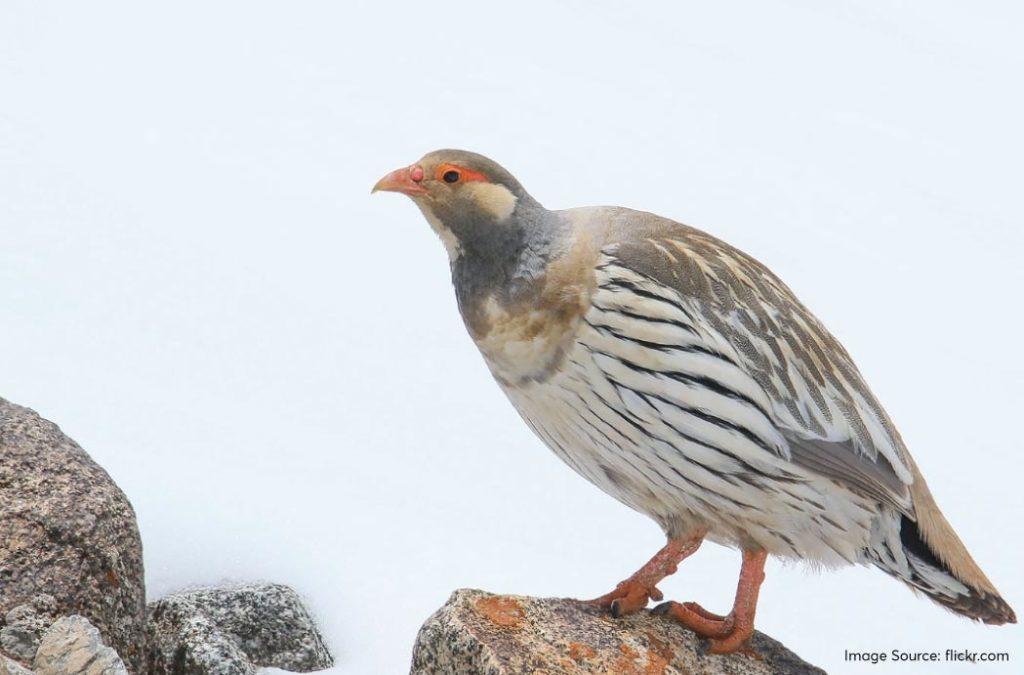
The birds stays close to the grasslands and rocky slopes because their body colour helps them with better camouflaging around these terrains. You will find them once you reach the grasslands at a higher altitude in Hemis National Park.
8 – Griffon Vulture
The Griffon Vulture is a bird of fascination for many because it is usually mentioned in fictional writings as well as movies as a powerful creature that can spread havoc!
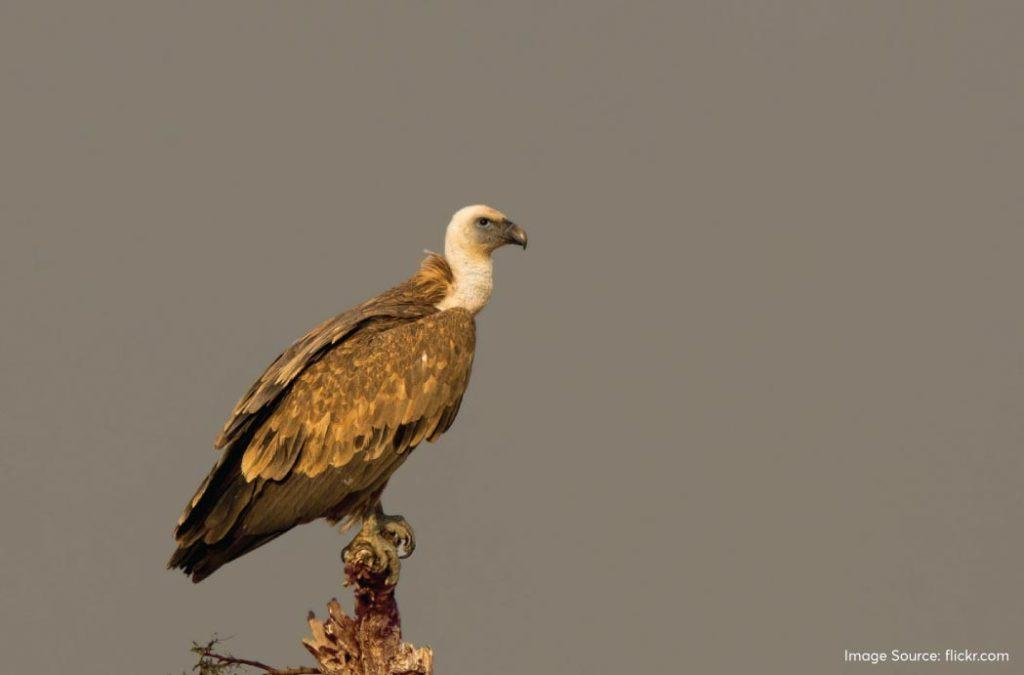
However, in reality, it is a scavenging bird that helps the ecosystem of Hemis National Park by clearing the carrion. They have a wingspan of 2.8 metres and a pale brown body with a distinct head. It won’t be wrong to say that they prevent diseases from spreading by consuming dead and rotting animals in the national park.
If you are a fan of wildlife and want to explore the fossils of the animals that once occupied our planet, you must definitely visit the interesting fossil parks in India.
9 – Lammergeier
How to spot a Lammergeier? Look out for a bird with a narrow, elongated body, a feathered beard under its beak and a wingspan of about 2.7 metres.
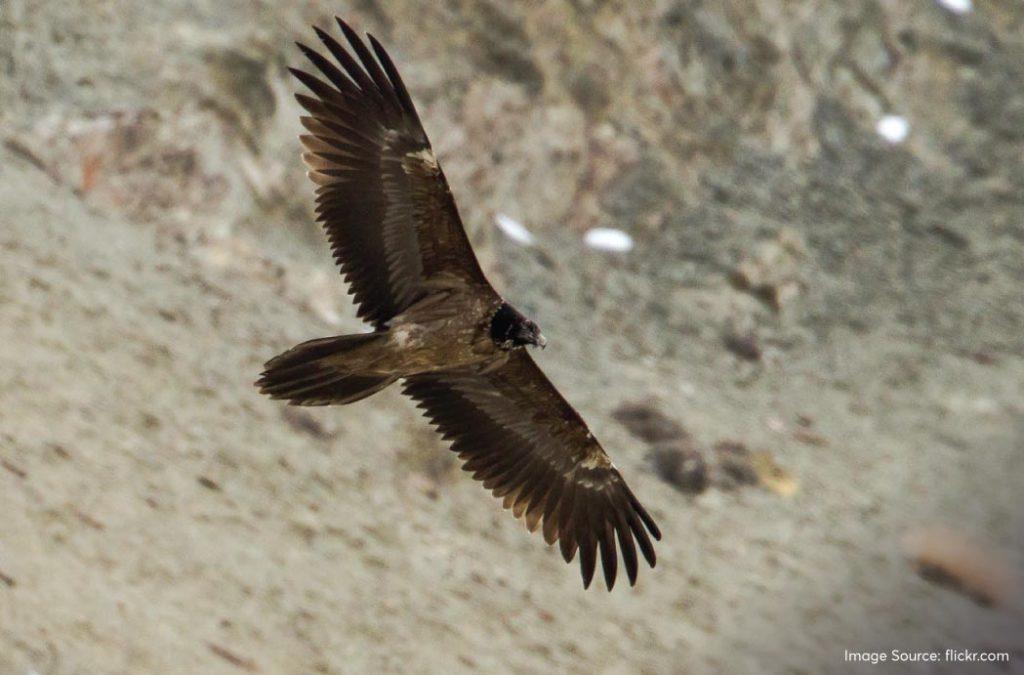
Surprisingly, these birds feed on bone marrow and drop the leftover bones from the skies while in flight! That is why, it also has the nickname of ‘bone breaker’.
10 – Himalayan Great Rosefinch
The Himalayan Rosefinch is a treat to the eye because of its rosy-red plumage that covers its body, head and chest. The tails and the wings have a pinkish tint to them.
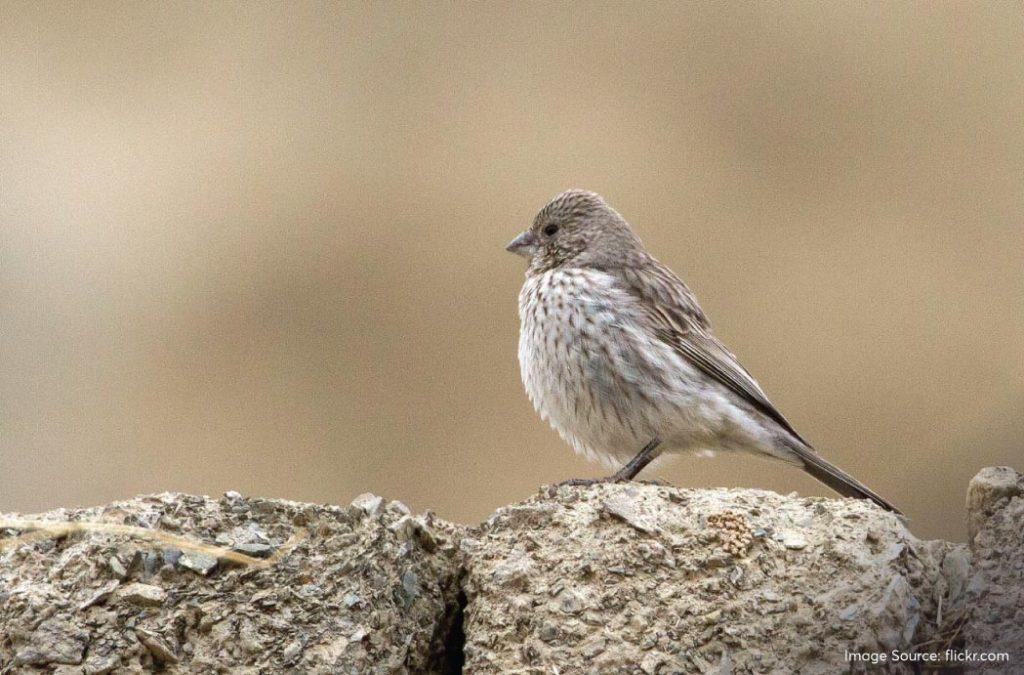
When it comes to the females, they have a brownish-grey colour with streaks. They occupy the alpine meadows of the Hemis National Park.
11 – Flora – Juniper and Birch trees
Juniper trees are very common in the Hemis National Park. These coniferous trees are well-adapted to the harsh climatic conditions of the high-altitude protected area and they continue to thrive even when the region is hit by harsh snow storms.
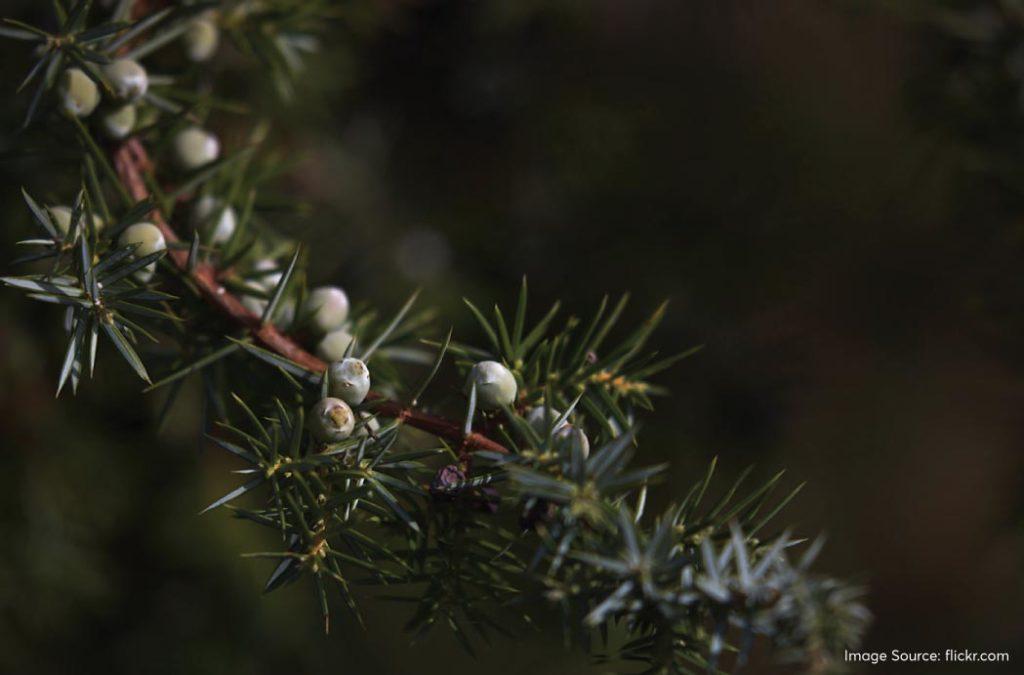
While Juniper trees are found in the higher and lower altitudes, the Birch trees are present in the mid and lower altitudes. These are deciduous trees that have a distinct white bark that peels like a piece of paper.
Entry Details
The entry fee for Indians is INR 20 while foreigners will have to pay INR 100. If you want to visit the park from November to May, you will need special permits from the Wildlife Office in Leh to enter the park premises.
Wildlife safari
In other national parks, you will find guides taking you around the protected area in a jeep or van to show you the animals in their natural habitat. However, no motor vehicles are allowed into the boundaries of Hemis National Park. the guides here will take you by foot and you will also need to trek and hike for short distances to cover the main areas of Hemis National Park.

This is to ensure that the park remains pollution-free. However, there are jeep safaris that show you around the national park but do not enter inside it. Also, note that Hemis National Park is animal-cruelty free and disturbing or hunting the animals here can result in hefty fines and even imprisonment.
Places to visit near Hemis National Park
Hemis Monastery
Hemis Monastery has been around for a very long and is a very prominent spiritual place for the Buddhists of the Drukpa lineage. It is present about 45 kms from Leh and it is very close to Hemis National Park. It is said that this monastery has been around since the 11th century.
People come here to experience the peace and tranquillity that the place offers. You should definitely explore the place after you enjoy your time at the Hemis National Park.
There are several good monasteries in Ladakh that showcase their culture and celebrate unique festivals that will keep you captivated.
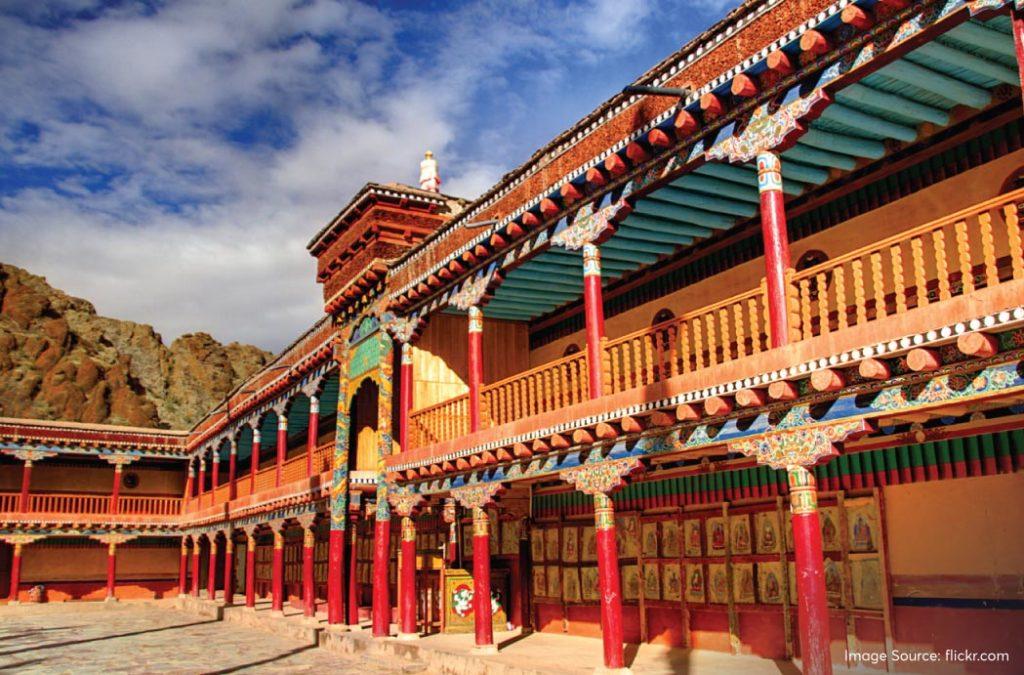
Gotsang Gompa
After you are done visiting the Hemis Monastery, you can explore the Gotsang Gompa which is another monastery located close to Hemis. You need to trek to reach the place but every minute is worth the peace you get to embrace once you reach the gompa. Unlike the Hemis Monastery, you can stay in the Gotsang Gompa for however long you want.
There are several Buddhist Monasteries in India that are similar to the Gotsang Gompa and offer the much-needed silence that can help you shrug off the stress from your daily routine.
Best time to visit Hemis National Park
You can visit the Hemis National Park all year round. However, this will depend a lot on the weather conditions of the place. Usually, it is advisable to visit the park from May to September as the cold is tolerable during the mid-summer. After October, the landslides and roadblocks make it difficult for you to visit the National Park.

Trekkers should consider planning their trip from June to August as the terrain is suitable then for the adventure as well as to spot wildlife. Also, this time period coincides with the famous Hemis festival of the Hemis Monastery.
How to reach Hemis National Park?
By Air
The nearest airport to Hemis National Park is the Leh Kushok Bakula Rimpochee Airport in Leh. You will find direct flights from Delhi, Mumbai and Srinagar. After reaching Leh, you can find shared taxis that will help you reach the park, which is 40 kms away, in about 1.5 hours.
By Rail
There are no direct rail routes to Leh or Hemis National Park. You will have to reach Jammu Tawi Railway Station which is 700 kms away from Leh. After you reach Jammu, you can take a taxi or bus to reach Leh. You can also take a flight from Jammu to Leh and travel by road to Hemis National Park.
By Road
Hemis National Park can be reached through Leh. You must reach Leh first and then head on NH1 on the Zanskar Valley Road. It takes approximately 1-2 hours to cover the distance of 40 kilometres from Leh to the national park. The route is wonderful with scenic landscapes, mountains, valleys and small villages.
Hemis National Park has some of the rarest animal and plant species that you will not find anywhere else in India. So, pack your bags and explore the snow-white wilderness that feels like a piece of heaven.
